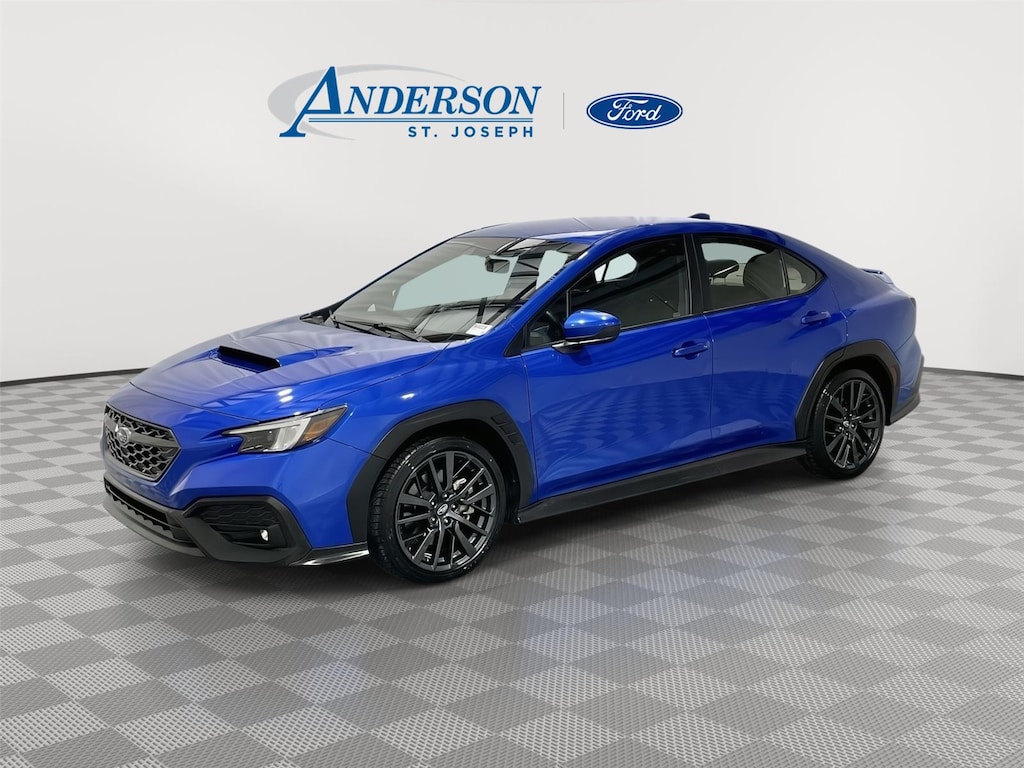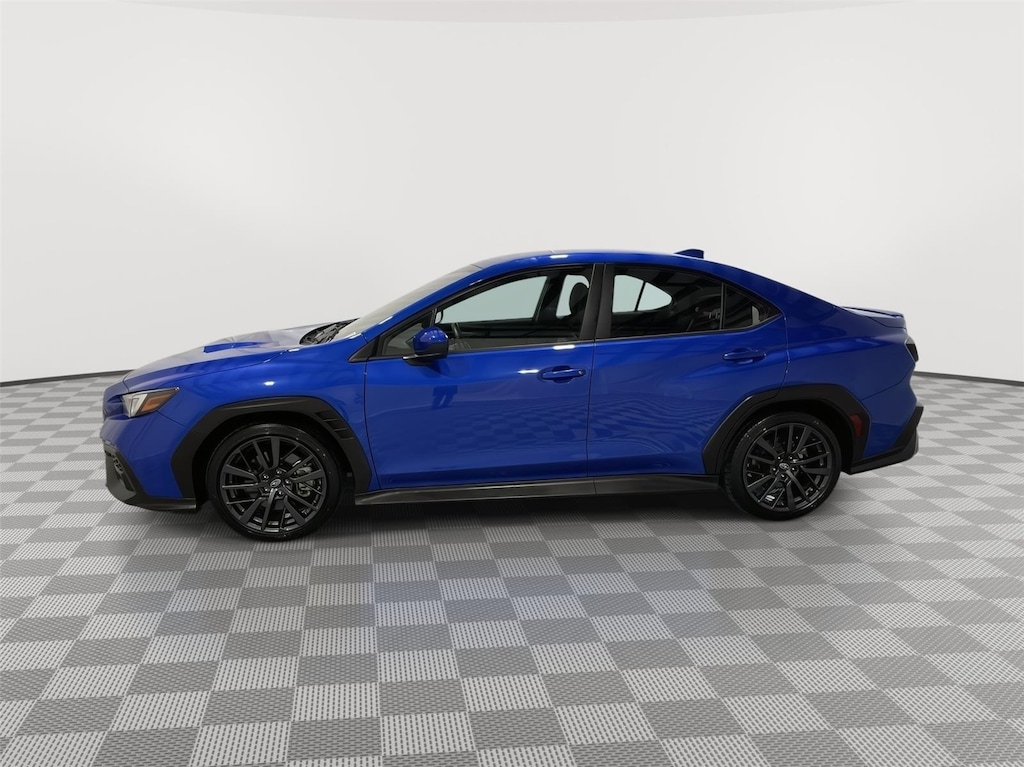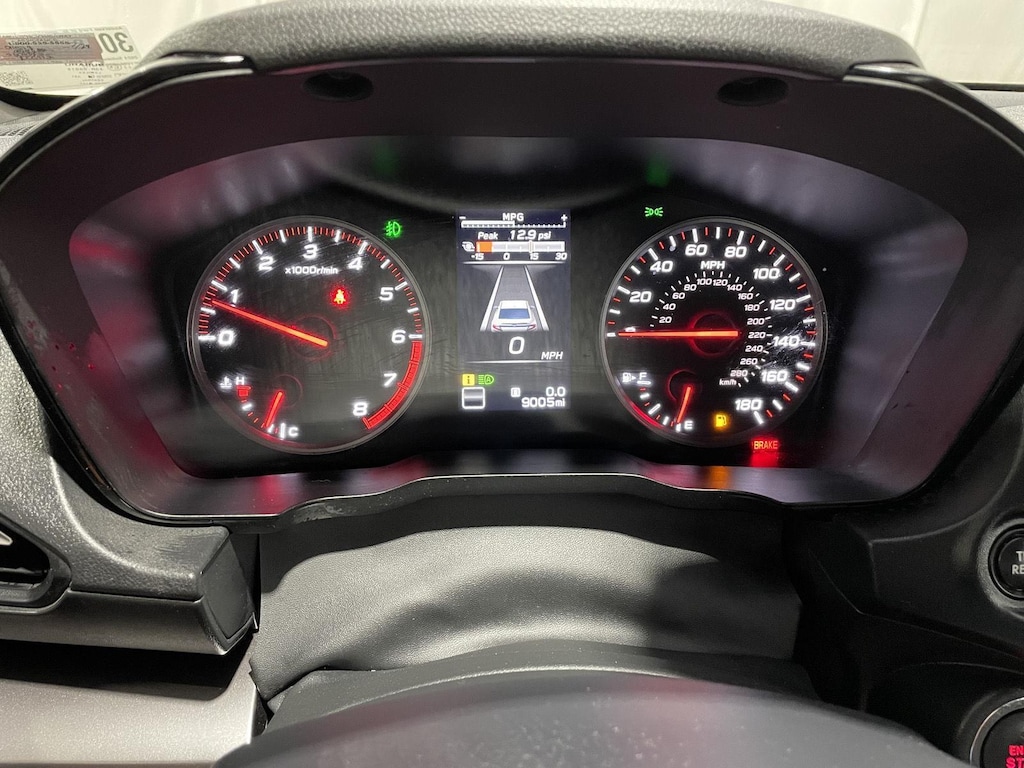It's Still 1970 here!
By Steve | on Thursday, July 13, 2023
Among performance cars, on a scale from 1 to 10, today’s WRX holds its head up proudly at a solid 9. If you’re old enough to remember the age before pollution controls and safety features, you won’t argue with me when I cite the 1971 Ferrari 365 GTB/4 as a 10 (“Relaxed at 140, undemanding at 150…controllable at 193…but acceleration tends to fall off after 155,” according to the contemporary Road & Track article). Back to the WRX, I hadn’t passed the break-in period at the time I started writing (see below), and the manual advises short shifting at 4000 until that point. I’ve been observing 3,000, because the WRX is turbocharged and boost comes on strongly a little above 3,000 so that stopping the acceleration precisely at 4,000 is a challenge. So, I didn’t experience the full performance of the car at first. Nevertheless, its capabilities are obviously huge, triggering a flood of cliches from the sports cars of the 60’s-70’s. “Corners as if on rails…steering direct and linear up to speeds where I don’t want to find out if it understeers, oversteers, or just slides sideways at the limit…glued to the pavement.” There’s no body roll, no squeal from the tires, and acceleration even in top gear is pleasantly lively through 55, without ever exceeding 3,000 on the tachometer.
When we consider that this “old fashioned” performance comes in a 4-door sedan with comfortable accommodations (at least in front) for a tall driver, yet, unlike BMW sedans at the time I bought mine, you can get it with a manual transmission, I hardly think the basic design could be improved. The seats are firmly bolstered; the designers obviously thought hard cornering would be happening a lot of the time, and so it should! The WRX is a Gran Turismo, though, not a sports car, as befits something with 4 doors and a useful back seat. Its cabin is fairly quiet and you won’t be pulled over because the exhaust is making such a racket that you’re making cows miscarry. (You might be pulled over because you’re going 80 in a 35 mile zone but that’s your own fault). Now let’s mention ride…another 60’s cliché comes unbidden to my computer: “if you run over a coin, you can tell if it’s a dime or a quarter.” The ride is tightly snubbed and very hard. For a GT, I question whether this is necessary. A similar odd decision from the designers is to deliver the car with summer-only high performance tires. To their credit, the dealer suggested I buy all season tires because this would have to be my only car, a daily driver, I can’t afford a sports car that I would take out only on nice days with another car getting the groceries. There are high performance, all season tires these days, and that’s what it’s riding on now. They cost $1000. Hard to imagine how summer-only tires could be better. The all weather tires should be a factory option for those who don’t have space to store the summer tires.
On the other hand, it’s no longer 1968. Some things are better but others aren’t as good as in the old days. The transmission has 6 forward speeds, which means it’s often not obvious with the optional “short-throw” shifter what gear it’s in. The manufacturer gave us a dashboard indicator to tell you that, but it’s low on the panel where it’s partly obscured by the steering wheel hub unless you adjust the tilt wheel and seat height carefully. (On the other hand it’s good there are many adjustments, unlike the sports cars of the 60’s). Worse, the indicator doesn’t show anything until you let in the clutch, when it’s too late to correct having selected the wrong gate. I understand why this is: it’s a “smart” manual transmission that won’t let you start the engine till you’ve floored the clutch, and the indicator evidently takes its signal from the same source so it can’t show you anything till the transmission “knows” it’s in gear. Furthermore, the movement of the shifter is a little unnatural in the top two gears with a deliberate sideways push necessary to get 6th when shifting up from 3rd, instead of 4th, and if you’re trying to downshift to 5th, the synchromesh wants to give you 3rd. Fortunately it’s a close ratio transmission so you won’t cause much trouble by getting 4th instead of 6th. Finally, like most post-1975 cars, the brake and accelerator pedals are placed at different levels and too far apart for heel-and-toe downshifts while braking. This is the unhappy result of a series of “unintended acceleration” incidents with automatic transmissions in the 70’s, and the decline of manual transmissions so that special pedal geometries for the latter are no longer practical from an industrial engineering point of view. Alas, my geriatric ankles are no longer up to the maneuvers necessary to double clutch while decelerating with this pedal geometry. The collar on the shifter you have to pull up on to engage reverse is another modern “idiot proof” feature but I think it's helpful – with the sideways push you need to engage 6th it would be truly a disaster if you got reverse instead and the gates are really close.
Moving on to more general interest items, shame on you, Subaru, for not giving us a boost gauge! I know where it should go, at the top of the panel between the analog gauges where the “mpg gauge” is now. I think the “mpg gauge” might actually be a vacuum gauge, so maybe it shows boost, but a direct calibration is necessary for any turbocharged engine. No one driving this kind of car cares about fuel consumption enough to look at the “mpg gauge.” There’s also a “cumulative mpg” readout that seems to be applied when you reset the trip odometer. This is somewhat useful and shows I’m getting about 28 mpg on the average, 31 highway, which for this lively a car is great! (Although, it’s premium fuel so it’s more expensive per gallon than most cars need).
Then there are less important quirks. The turn signals, although there’s a stalk where you expect, are electronic with no detents. This makes you wonder if the signal has been engaged, making you look at the flasher on the dashboard to be sure the signal is on. Signaling a lane change is particularly clumsy. The high beams are “smart” – they turn themselves off when they detect an oncoming car, back on when it goes by, and keep them off when you slow down to 25 mph going into town. While this is useful, on principle I don’t think a GT should be “smarter” than its driver. Mercifully, the lane departure warning and other irritating alarms I’ve put up with on recent cars have been left off the base model I selected. The WRX is available with the continually variable transmission (CVT) that is used on many other Subarus, including my previous car, an Impreza. I think a CVT is a very sensible match for a turbo engine that has relatively low torque at low RPM’s, so if you’d rather not shift it yourself, you could rationalize that it’s probably faster with the CVT. Old timers like me often think their automatic is in the wrong gear so a manual transmission is essential. Then there’s the trunk release…the Impreza had a button on the outside while the WRX requires that you trigger the trunk release either from the dash or with your “smart” key fob. I prefer the button on the back of the car. And don’t get me started on the seat belt alarm! It’s a loud chime that becomes twice as loud if you ignore it for 10 seconds. And the low tire pressure warning still doesn’t tell you which tire is low or whether it’s so low you have to pull over.
The HVAC system has its own quirks. It has a thermostat so you dial in the temperature you want. This system has been available since 1990 to my certain knowledge, but it’s an example of “why-tech” rather than “high tech” (with apologies to Road & Track, which produced an article with that title). If you get into the WRX and it’s below freezing outside, you’ll discover quickly that the thermostat’s lowest setting is 60. That results in hot air pouring out of the heater. You then have to pull over and take off your outer layer, or turn the heater off. There’s no analog lever you can open just slightly so you’re still comfortable in your winter clothes. Air conditioning seems to work better.
But, the downside things are mostly nits. The WRX is an excellent GT.
After Break-in: Yep, it’s fast! Taking the engine to 5,000 results in the scenery behind shrinking rapidly with a satisfying pressure against your back. However, it’s not an abrupt surge of boost, another reason there should be a boost gauge. Turbo lag is there but it’s subtle. Acceleration off the line is nothing special. If you’re old enough to remember a V-8 with 4-speed, you’ll miss the need to back off on the throttle to keep wheelspin under control. In fact, with power going to all 4 wheels, it’s hard to get wheelspin regardless of technique. But in the midrange there’s a satisfying surge of thrust limited only by the redline that approaches with remarkable speed to the accompaniment of a subdued burble from the exhaust. Full throttle acceleration through the gears shows another quirk – a noticeable squat as each gear “hooks up” with the turbocharger. Possibly this is why such a hard suspension is necessary? The American solution would be a longer wheelbase but that would be a weight penalty and the car is big enough.
Bottom line is the WRX is an excellent GT! I’ve taken a 200 mile road trip in it and while it’s not a 60’s sports car, it gives you a combination of comfort and performance that is as entertaining as anything available today. If you like going fast, the WRX is for you!…






